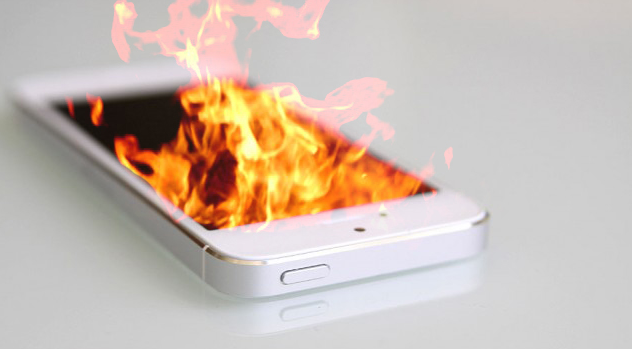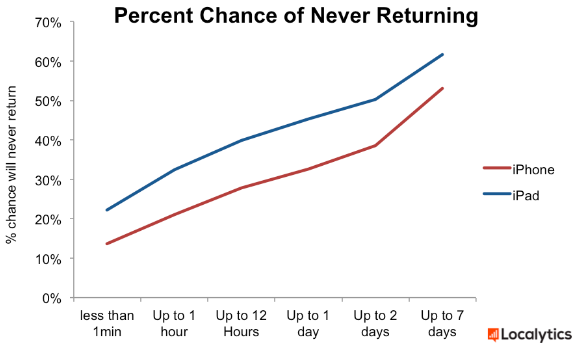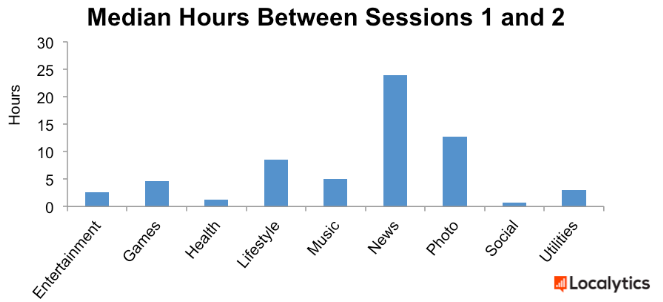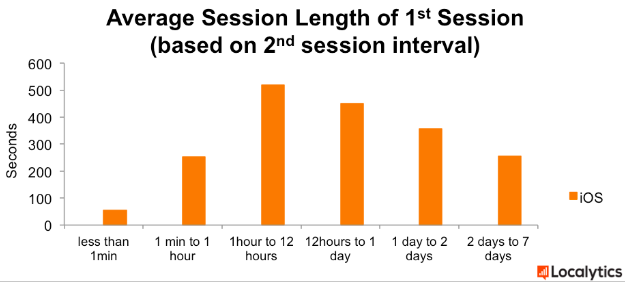Gone for a week - gone forever: burnout of the mobile application audience based on Localytics data

The problem of audience burnout (churn) is one of the most acute in the marketing of mobile applications. The falling quality of traffic leads to the fact that the next day you can not detect up to 90% of users who entered the application yesterday. Should I panic or is there a chance of their return? Analytical platform Localytics has presented an interesting report on the “burnout” of the audience and the periods of risk of “non-return”. Translation of this article, we offer to your attention.
On the average American's smartphone, you can find more than 30 downloaded applications along with waiting downloads, which leads to a high degree of competition between them in the struggle for the user's attention.
Previously, we reported that 22% of users open the application only once, while 34% return to it 11 or more times. For sellers, it is very important to quickly calculate one-time users and return them to the application before they are gone forever.
But how to determine which users will stay for a long time?
The answer lies in the interval between the first and second visits to the application.
With a probability of 60%, users who do not return within 7 days will never return.
According to a global study on the use of iOS devices (iPad and iPhone), on average, the user returns no more than 6 hours after the first session. However, if the user does not open the application for more than one day from the moment of the first launch, with a 40% probability he will never return.
The longer this “non-return risk period” lasts, the more likely it is that the user will not return: after 7 days after the first launch of the application, it is already 60%.

')
For applications of certain categories, measures to retain the audience should be taken even more quickly. Statistics of applications of categories Social and Entertainment states that, without returning to the application within 12 hours after the first launch, the user will no longer return to it with a probability of 50%.

News apps, on the other hand, have the longest time span between the first and second launch.
On average, the “risk of non-return” period for them is almost 24 hours. Moreover, even if the user does not open the application within 7 days after the first launch, there is still a 59% chance that he will return later. Perhaps this is due to news cycles, increased public interest in the news in the days of significant events. Indicators of health applications are close to Social and News. The average user opens the application again after an hour and a half, but there are also a large number of users returning much less quickly.

Users with the longest first sessions return to the application within 1-12 hours, immediately followed by those who return within a day - this is typical of almost all categories of applications and mobile platforms.
The second group of users, which make up almost half of all returning users, clearly demonstrates the typical behavior of users in relation to new applications: a long first session for testing new items and another approach during the day.
Users who spend less time getting to know the app also return to it after a few days, which is not surprising.

Repeated attraction of users
It is incredibly important to motivate users not to delay with a second visit to the application, especially when it comes to applications of the category Social, Entertainment and Lifestyle. So how not to miss users?
Push messages appearing on the screen, a great way to re-attract users. However, to avoid an oversupply of users, especially those who only once opened your application, you will want to make your messages more understandable, target them to a specific audience.
Distributing push messages into categories will allow you to contact only those users who are in the “risk of non-return” group, and not all at once. If the push campaign is associated with analytical data, you can contact the users based on their behavior during the first session. For example, you can refer to users who have not completed the registration or have not paid attention to any of the key functionality during the first visit.
Thus, despite the fact that the “risk of non-return” period may look frightening, application developers will be in a much better position, armed with the know-how to keep users in specific time intervals (for example, sessions) and tools to combat public outflow, such as push and inline messages.
The material is based on Localytics data - a leading analytical and marketing platform for mobile and web applications among more than 1.5 billion devices, 25,000 applications and 5,000 customers.
Localytics processes 50 billion data points every month. For this article, we explored new users of iOS applications in November 2013 and traced their user activity until February 2014.
Source: https://habr.com/ru/post/222151/
All Articles